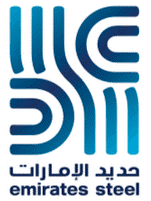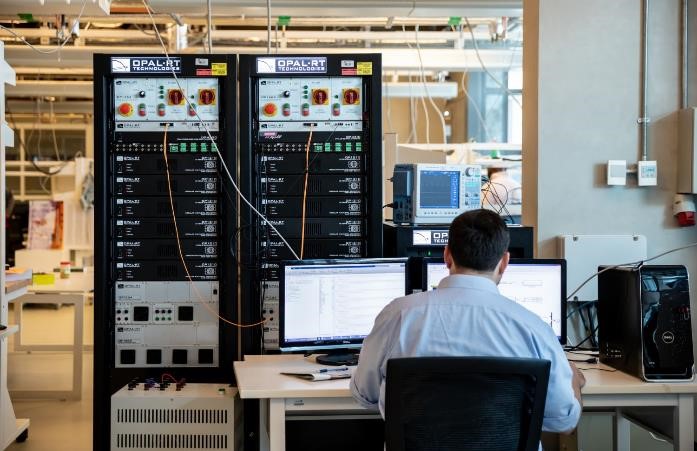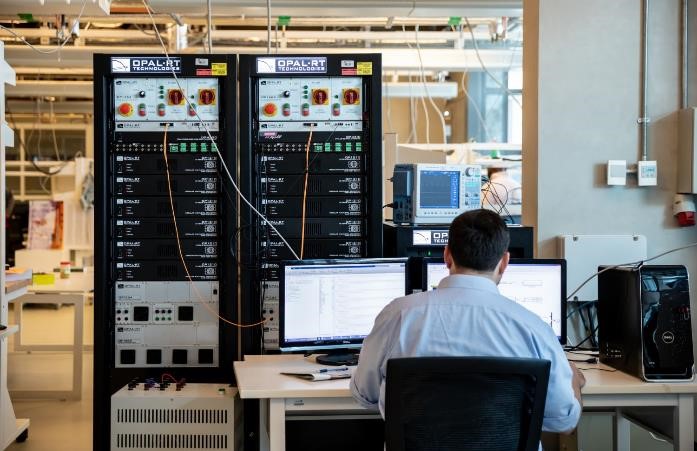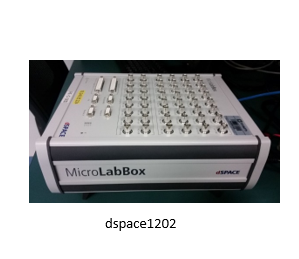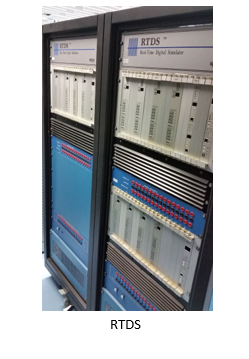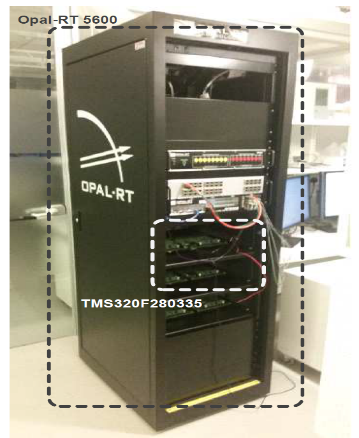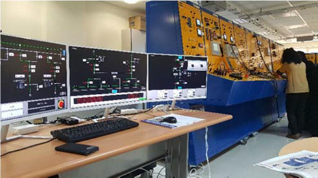Real Time and Artificial Intelligence Energy lab
This research lab is fully equipped with power system simulators that can be used for power system analysis, power system protection, power system stability and power system control. In addition, the lab includes several real time digital simulators RTDS, OPAL-RT and the MMCs modules for developing advanced research on Hybrid AC/DC Power Grid with renewable energy and energy storage systems integration. The lab includes all required equipment and simulation software (e.g. PSCAD/EMTDC, PSS/E, PLEXOS, MATLAB and other tools) for developing research on power system flexibility and stability as well as testing based on hardware-in-the-loop (HIL). The lab equipped with the state of the art AI software and tools for power system stability prediction, online forecasting, and renewable energy dispatching control strategies based on REMS tool for real-time operation. The setups of hybrid AC/DC power grid augmented with the AI tools can be used for predicting transient and small signal stabilities and online inertia estimation with renewable energy integration. In addition, the lab supports developing research works on the cyber physical security, and grid flexibility. In this lab, we envisioned the concept of Twin Lab between academia and industry for serving power utilities and large industries needs for carrying out real time system analysis, and applying advanced AI techniques for enhancing the dynamic performance and efficiency of energy systems.
- Description of Power System Simulator
The Power System Simulator Laboratory is fully compliant to IEC 61850 standard and it represents realistic power system operation and control. The simulator can be configured with typical power system modules such as turbine-generator, power plant section, transmission lines, receiving substation and the load module incl. an induction motor with flywheel. The simulator consists of several modules as follows:

- PST 2210: Power Plant Module with High Voltage Busbars and Outgoing Lines. It includes a switchboard, turbine, generator, instruments, transformers, protective relays, and indications. It has A-B busbars and two outgoing lines with their corresponding protective relays and instruments. Optional configurations can include multiple turbine-generator sections.
- PST 2220: Transmission Lines & Distribution Module. It provides artificial three-phase transmission lines with adjustable impedance elements for different HV levels. It also includes cable models for distribution.
- PST 2240: Load Module. It includes various resistive, inductive, and capacitive loads, as well as an induction motor with a flywheel to simulate different types of loads.
- The setup includes necessary switches, instruments, and overload protections. Current and voltage transformers, as well as protective relay blocks, are connected using jumpers. The protective relays and equipment can be tested individually or with external devices. Transmission line impedance elements can be configured for different protection settings. Generator, transformer, and system protection are provided. All protective relays are easily accessible and can be tested without interfering with the simulator’s operation. Optional multiple zone distance protection can be installed. Experiments can be performed on the complete setup or individual modules, and external relay testers can be used.
- The power system simulation setup offers a range of experiments that can be conducted under normal and fault conditions. Under normal conditions, experiments include adjusting control parameters, checking supplies and indications, studying generator performance, testing protective relays, analysing load distribution, studying voltage and speed control, and optimizing controller parameters. The setup allows for individual testing of protective relays, calculation of impedance maps for optimized protection, and studying different protection methods.
- Under fault conditions, experiments involve studying transient behavior during faults, analyzing system earthing methods, assessing fault currents and short circuit protections, observing generator response during unsynchronized operation, demonstrating fault interruptions, testing generator protection schemes, and simulating faults in various scenarios such as small areas, substations, or power plants. Load shedding schemes, fault location/resetting, and load sharing can also be studied in regional or national fault scenarios.
- The experiments provide insights into the response and performance of the power system components, protection schemes, and control systems. They allow for testing and optimization of protective relays, analyzing fault responses, and understanding the dynamics of the power system under various conditions.
- Industrial Collaborators




